Summary
- Responsive Search Ads (RSAs) are generally an upgrade of old ad formats.
- Not being able to set a goal impedes them from being as effective as they can be.
- Don’t try too much: 5 quality headlines are better than 3 great, 3 mediocre, and 3 bad.
- Ad strength doesn’t (really) matter.
- Understanding what assets convert the best is really hard.
- The ad variation functionality seems to be the best way to A/B test assets.
Intro
I believe RSAs have the potential to be one of the best things Google has introduced since Google Shopping.
RSAs offer a powerful way to perform ad testing without having a strong technical skill set of how to exactly do it. Just add new assets, and Google’s automation takes care of the rest. This is very similar to the way Facebook has done it for a long time.
But at the time of writing this, it’s not all rainbows and butterflies.
In my opinion, the dangers of RSAs are as follows:
- You are not in control of setting whether you would rather have a high conversion rate or a high clickthrough rate.
- You can’t really optimize the ads across entire campaigns. You can’t accumulate asset data, so optimization becomes very tedious and/or is guesswork.
- There is no transparency to what constitutes good vs poor-performing assets.
I generally like the idea of RSAs. Add ad assets, and Google will test them directly? On top of that, will Google register if one ad asset converts better with a certain search term or audience and show that?
It sounds like a cheat code.
But with so many things Google comes out with, it’s not perfect. Smart Bidding was awful when it first came out. Now it’s pretty good.
I believe the same is true for RSAs. I welcome anything that makes it easier to test ads. I believe it’s an underused optimization tactic, and I know Google has data to support this (i.e., how the horrible ad suggestions can convert better on idle ad accounts that never get optimized).
What RSAs are lacking is the same as so many Google Ads features:
RSAs lack human oversight.
I would love to be able to
- Choose if I favor Clickthrough Rate, Conversion Rate, Revenue, or ROAS.
- Analyze metrics for ad assets across ad groups.
- Analyze metrics for ad asset combinations across ad groups.
If this happens, then RSAs would truly be amazing.
I know why they don’t have it yet. New features meant for the masses rarely include elements for professionals.
So until we get this, here is how we choose to work with RSAs at SavvyRevenue.
A quick terminology explainer
- RSAs: Responsive Search Ads
- Ad Assets: Headlines or descriptions you add to RSAs
The Myth: RSAs are shown more
Common saying, but we have always found it odd. Why should Google show an RSA from account A more than an ETA from account B? It lowers the auction competitiveness.
The same logic applies if Google gives an ETA a lower quality score just because it’s an ETA. This makes little sense.
Our guess—albeit a professional one—is that this is a load of bull. Yes, you might see a bigger click volume by switching to RSAs. But it’s because of three things:
- You are finally optimizing your ads.
- Mixing different assets does better than your old static ad.
- And the big one: RSAs favor ad assets with high CTRs.
So yes, in part, your new RSAs give you more volume. But it’s not because it’s an RSA type. Adding the exact same assets from an Expanded Text Ad to an RSA shouldn’t yield more impressions by itself.
Conversion Rate vs Clickthrough Rate?
Conversions vs clicks?
Revenue vs clicks?
What’s most important?
The age-old question of whether it’s an ad’s responsibility to get a click or to aid in conversion has become relevant again.
Some prominent people, such as Frederick Vallaeys, advocate that an ad’s job is to get as many people to click on the ad as possible—that is, getting as high a clickthrough rate as possible. The website should be responsible for converting that traffic.
I am in the other camp (although it’s not a black-and-white case).
I strongly believe ads are core to whether a conversion happens or not. Will a conversion happen if the ad is superb and the website is poor? No.
Will a conversion happen if the ad is poor and the website is superb? Yes.
Will you get more conversions if what your website promises is also replicated in your ads, and you prequalify visitors before they get to your website? Absolutely.
Why bring this up?
You see, RSAs are notorious for focusing on ad assets with high clickthrough rates vs high conversion rates.
This means that your new RSAs might attract more clicks but will, at the same time, convert fewer visitors.
Higher costs at lower conversion rates result in a much lower ROAS. Not good.
That’s why we have to be careful with simply adding a ton of random not-so-thought-through ad assets to our ads.
The best practice from Google is
- Add as many as possible, and we will find the ones that perform the highest.
- It doesn’t matter if some are bad; we will weed them out.
And that’s great. I really like that. Anything that makes ad testing easier is, in my book, a huge value add.
However, the problem occurs when we can’t decide what good performance actually means. Is it high CTR or high conversion rates (or high AOV or high ROAS)?
Ideally, it should be a mix of all the metrics—that perfect balance that brings the most bang for your buck (or, if we need to be professional, return on your investment).
It doesn’t work that way yet, though. So here is how we have worked with RSAs and not fallen into the low CTR trap.
Framework to Get the Most from RSAs
We can list this fairly simply, as we have written extensively about how to write effective eCommerce ad copies for Google Ads before.
1) Don’t add too many assets
Most PPCers aren’t copywriters, so chances are you will start adding terrible ad assets that bring little value if you try to fill out the 10–15 headlines RSAs allow.
Focus on writing high-quality, differently-themed headlines rather than writing many headlines.
2) Consider your traffic levels
Four conversions over the last 30 days, but you have 10 headlines and 4 descriptions in an RSA? That’s 40 ad combinations. No wonder Google uses CTR more, as it is the only metric with enough volume it can actually rely on.
3) Creating 2–3 RSAs with different themes and few assets is a good strategy
Another take on working with RSAs is to treat them slightly like you would with normal ETAs.
Create 2–3 ads that you test against each other
RSA 1: Price focused
RSA 2: Selection focused
RSA 3: Selection focused—different wording
Don’t create too many headlines and only two descriptions.
Pin headline 1.
4) If all else fails, PIN AWAY
There’s no shame in pinning.
The guys at Hanapin Marketing wrote a great piece that indicates Ad Strength doesn’t equate to Quality Score or directly influence your impressions.
It’s, therefore, OK to just pin the headlines you want, and that’s it.
It will feel wrong as if you are not supposed to do it. But like I tell our new people,
Initially, you need to learn best practices to become good, but it’s not until you learn how to break free from best practice that you become great.
RSAs for eCommerce Examples
Do this: Headlines
- Newest Nike Shoes
- Save Up to 30% on Nike
- All Sizes: 6 to 14
- Choose from 100+ Nike Models
- Kids’ and Adults’ Nike Shoes
- Price Match & Free Shipping
Not this: Headlines
- Newest Nike Shoes
- New Nike Shoes
- Get New Nike Shoes Here
- Save Up to 30% on Nike
- Nike Shoes—Save 30%
- 30% Summer Sale on Nike
- All Sizes: 6 to 14
- Sizes 6 through 14
- Every Size: 6 to 14
You see what I did there?
In the good example, I wrote six different headlines.
In the bad example, I wrote three different headlines with slightly different wordings. They are basically saying the same thing. Unless you are Nike literally, you will not have enough traffic to test the difference between saying
and
I’m not saying there couldn’t be a performance difference. I’m saying that it’s not what you are supposed to be testing initially.
Initially, you have to focus on testing whether the promotion message
converts better than the size message:
Once you know this, you can start working on tweaking how the message is worded.
The Playbook
RSAs and Promotions: Here’s How
Recommended: Pinning headline 2 and description 1
- If the ad message is really important
- Be aware that you could lose impressions by pinning
If you do not want to pin headlines, we recommend making sure that the assets are as diverse as possible.
Here’s a good example of writing different asset headlines for a promotion:
- Keyword + adjectives
- Save 20% today
- Sale ends [countdown]
- Popular sitewide sale
- As long as stock is available
A similarly bad example is the following:
- H1: Keyword + adjectives
- H2: Save 20% today
- H3: Summer sale: Save 20%
- H4: Sale: Save 20%
The ad looks bad if you show very similar headlines. Moreover, you waste space in your ad copy you could use to focus on other benefits.
What about Your Ad Customizers?
This works just like normal, so no need to write more about it than directing you to the help center.
Ad Strength Is Not Equal to High Performance
For all RSAs you create, Google will give them one of four scores:
- Poor
- Middle
- Good
- Excellent
The score is mostly affected by the following:
- Are your assets unique?
- Have you provided enough assets?
- Are your keywords included in your assets?
- Pinning, which will affect your score negatively
Adalysis conducted an extensive analysis of the importance of ad strength and the overall conclusion: Having an Excellent vs Poor ad strength does not seem to affect your account in any significant way.
Adalysis provides the following conclusions about ad strength:
- Ad strength seems to be mainly a reflection of Google’s ability to test your ads and the diversity of those headlines.
- If you use at least eight headlines, it is possible to get an Excellent ad strength. However, it is much easier to do so with 13 or more headlines.
- Your ads could all have Poor ad strength but maintain high conversion rates. You could improve your ad strength from Poor to Excellent and not see a significant improvement in CTRs or conversion rates.
- If you have at least two RSAs in an ad group, the RSA with the higher ad strength will generally get more impressions, but there are many exceptions to this.
- While it might be possible to get an Excellent ad strength when you pin your headlines, it is rare. A Good ad strength is, however, easy to achieve with pinning.
RSAs are made to optimize performance according to CTR. The higher the CTR, the more revenue for Google but not necessarily the more conversions.
In our opinion, you should not optimize your RSA blindly to get a higher ad strength; as well as you don’t want to optimize your Google Ads account “just” to get a higher Optimization Score.
How to Review and Optimize RSAs
This is really where RSAs start being limited. At the time of writing this, you can’t just pull up an ad asset and see how the CTR, Conversion Rate, ROAS, and Revenue are associated with that asset.
The best you can do is get the asset’s performance rating via the Assets Analysis view.
But we fall into the trap of using whatever Google employs to calculate the performance rating.
Having been in Google Ads since 2010, I have been testing ads since the early days of just having 2x 25-character headlines. Some ad copies generate high CTRs, but some produce high Conversion Rates. Some ad copies generate both, while others produce one or the other.
If we all start working towards a higher CTR, we might see performance drop. This is a “the sky is falling” mentality, but we have seen it in a couple of cases with a lot of data. It is not enough to conclusively say that it’s always bad to work off the performance rating metric, but it is enough to be concerned about.
The cleanest way to AB test RSA assets appears to be the Ad Variations functionality.
It’s not as easy as just creating new ads with multi ad group ad testing, but it might end up being the best solution.
We are going to jump into some testing with pinning RSAs vs running ad asset testing using the performance rating. Because if the performance rating is equal to actual performance (revenue/ROAS), then it’s amazing.
I just don’t like not knowing what factors are used to calculate the performance rating.
Test, but Be Careful
RSAs offer a powerful way to perform ad testing without having a strong technical skill set of how to exactly do it. Just add new assets, and Google’s automation takes care of the rest. This is quite similar to the way Facebook has done it for a long time.
However, where Facebook Ads have proven to allow you to set goals (i.e., revenue), Google still falls short of allowing advertisers to have input on what goal should be optimized for.
So even though RSAs are an upgrade of old ad formats, don’t just assume they will perform better. Be careful, and remember to only add quality ad assets and follow up on your results.
I can’t stress this enough—do not think you have to add 10 assets. Five quality assets will outperform 10 poor assets any day of the week.

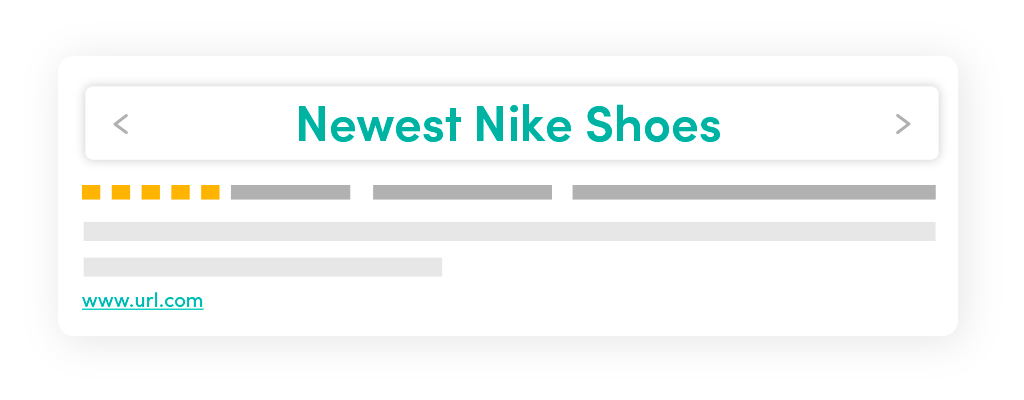
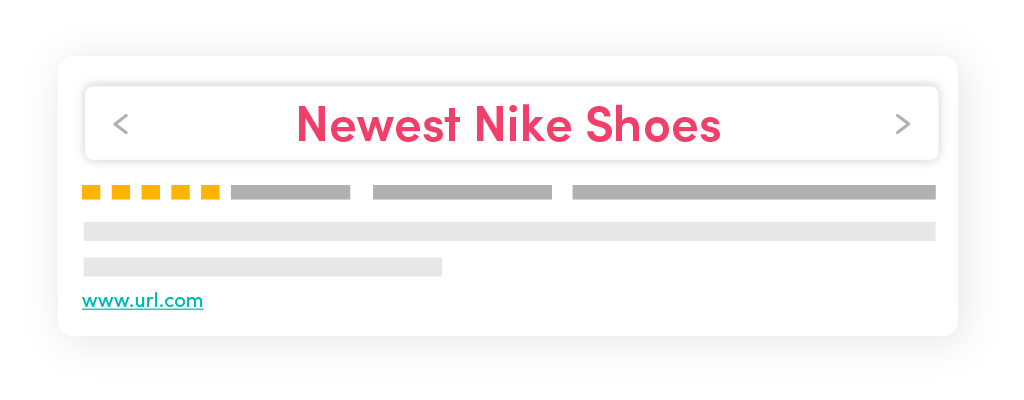

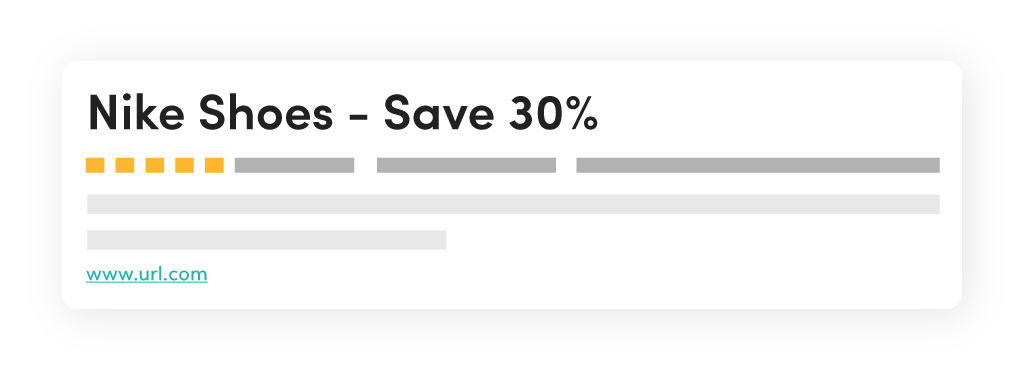

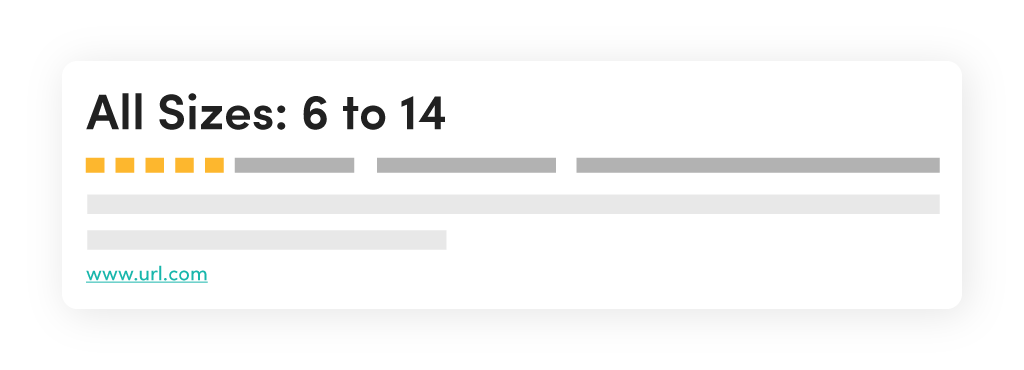

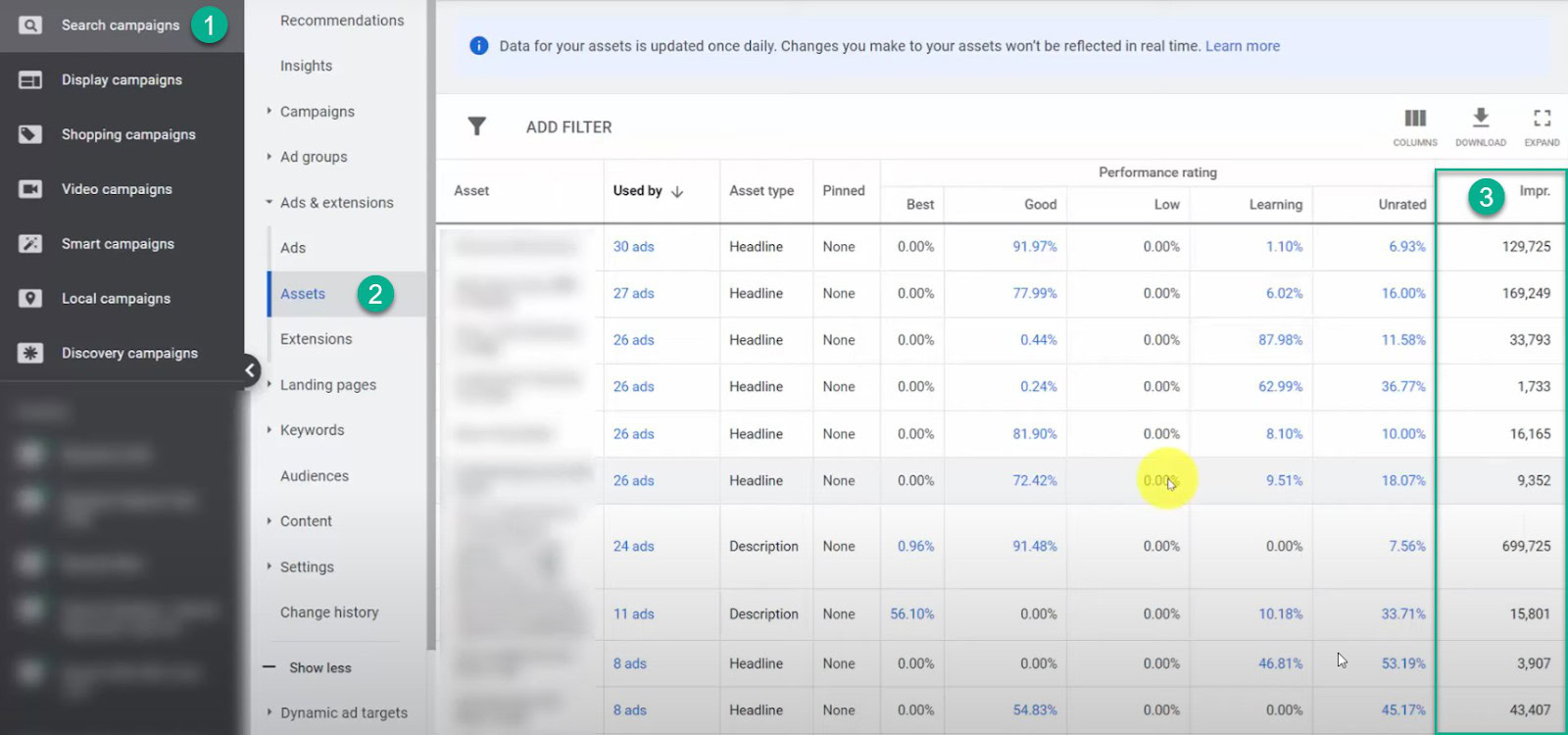
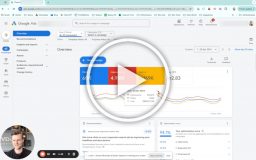





6 thoughts on “Optimizing Responsive Search Ads for eCommerce”
“Don’t create too many headlines and only two descriptions.”
Why do we use only two descriptions? Didn’t be better use four?
Too many descriptions will increase the number of variations Google has to test. In our opinion, adding four descriptions and five headlines is too many.
Rather focus on 5-6 headlines and two descriptions — or vice versa: Three headlines, and four descriptions.
Hi Andrew,
What do you mean by “Selection focused”? Any good examples of this?
Thanks.
Had some great information tips and tricks here Andres, thank you for that. This topic was an wild one on the Paid Search Podcast from Chris and Jason.
Great article, thanks for that!
You mentioned the help centre for ad customizers, but there is no href present at the link. Furthermore, would you recommend using a keyword placeholder in RSA and should it be pinned, and if yes, at what position?
Thanks!
I
I’m not a huge fan of pinning as it goes against the idea of RSAs — That the best performing assets get the most exposure. Furthermore, pinning means we can’t directly see how something performs based on the number of impressions.
But if you want to test two assets against each other directly pinning can be useful.
Here you go for the ad customizer link: https://support.google.com/google-ads/answer/10711524?hl=en 🙂